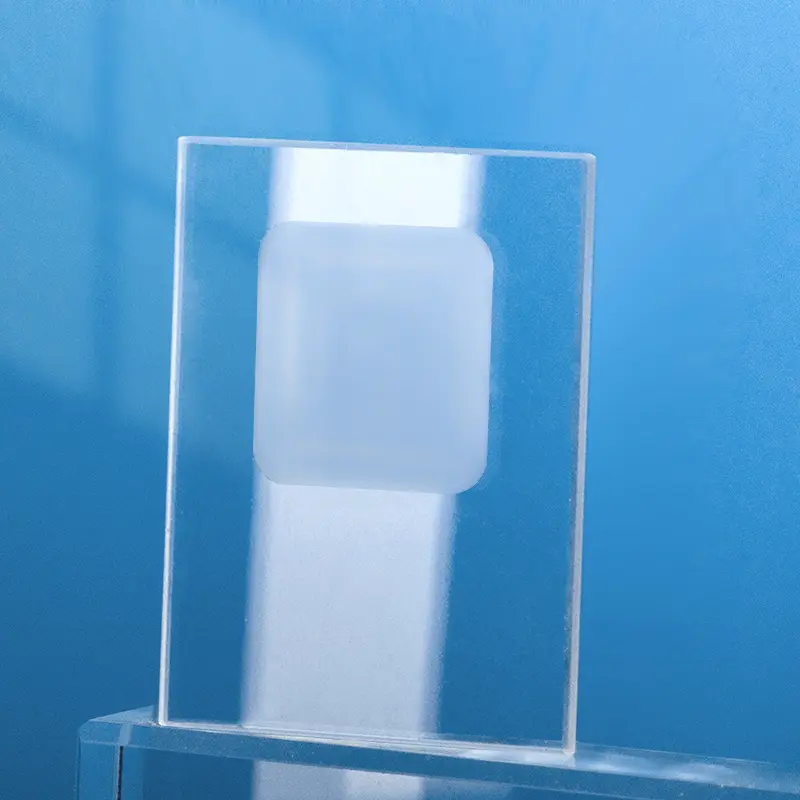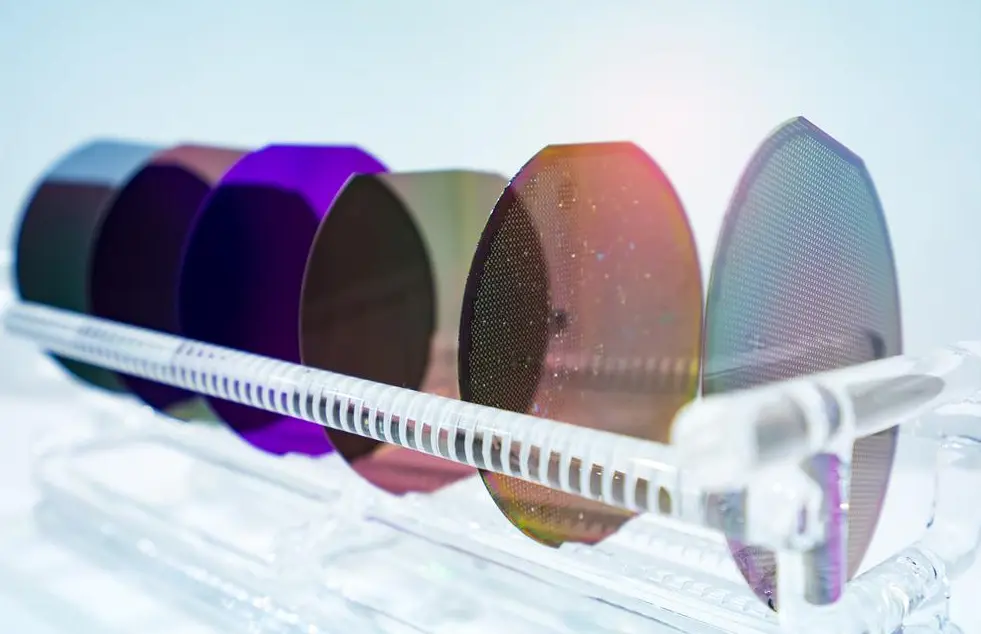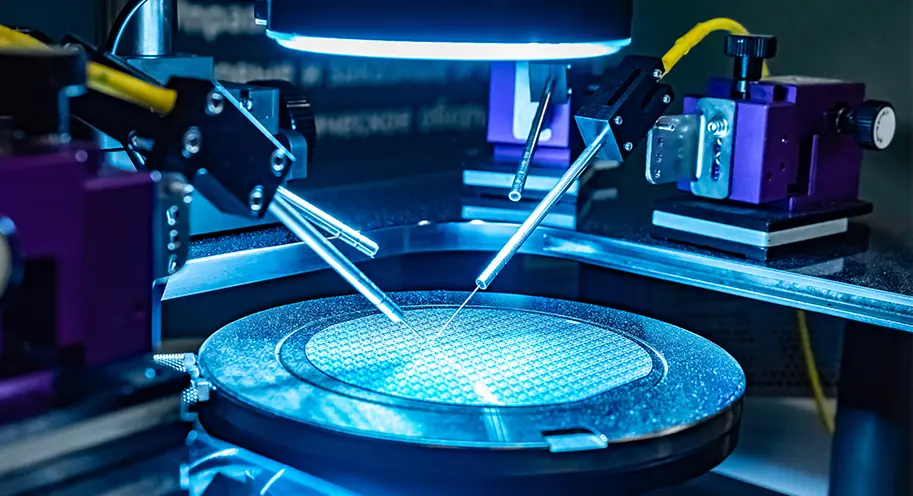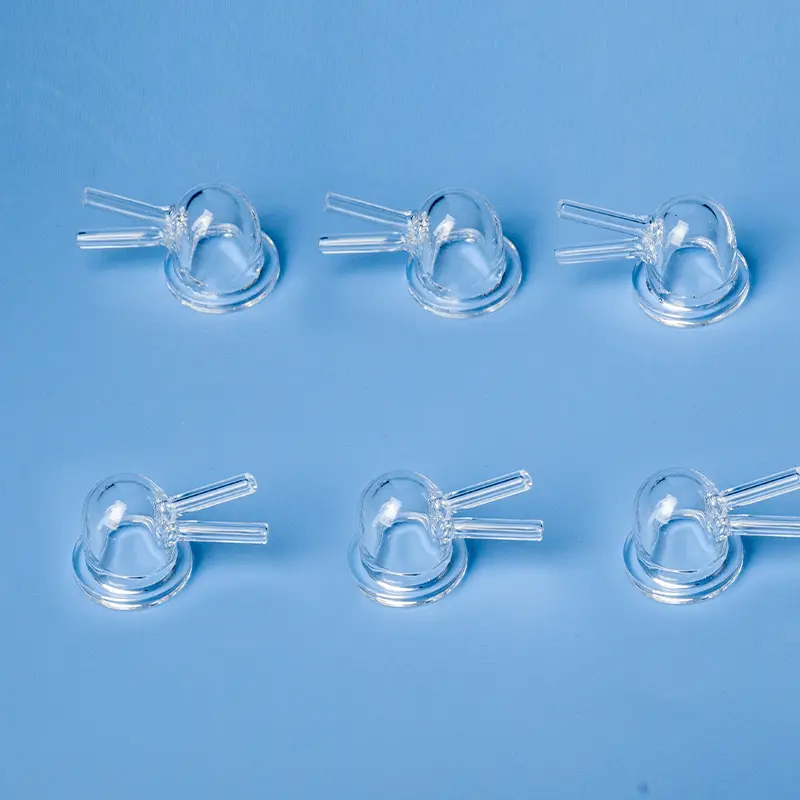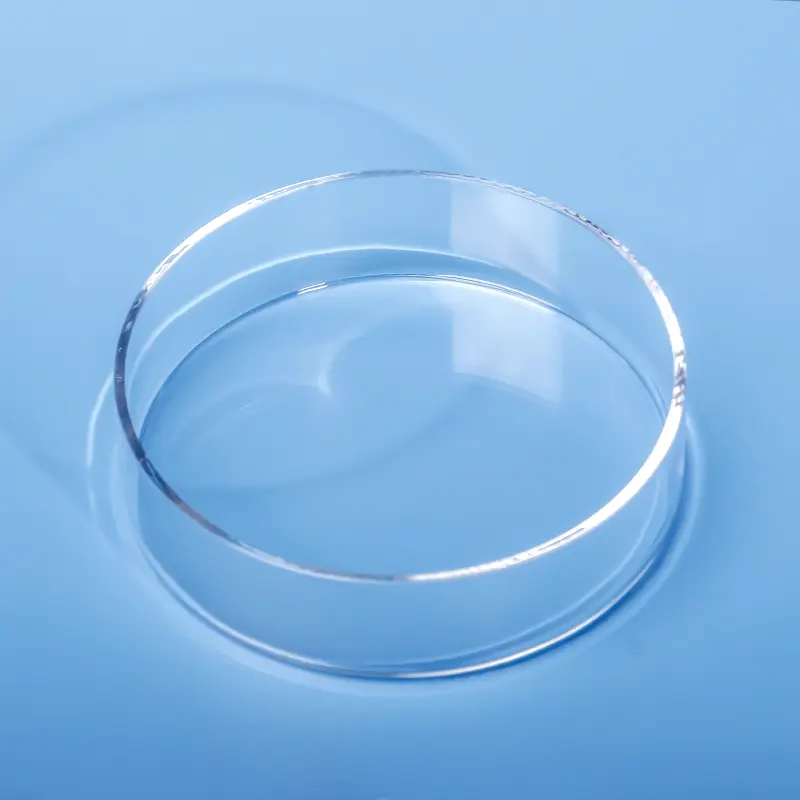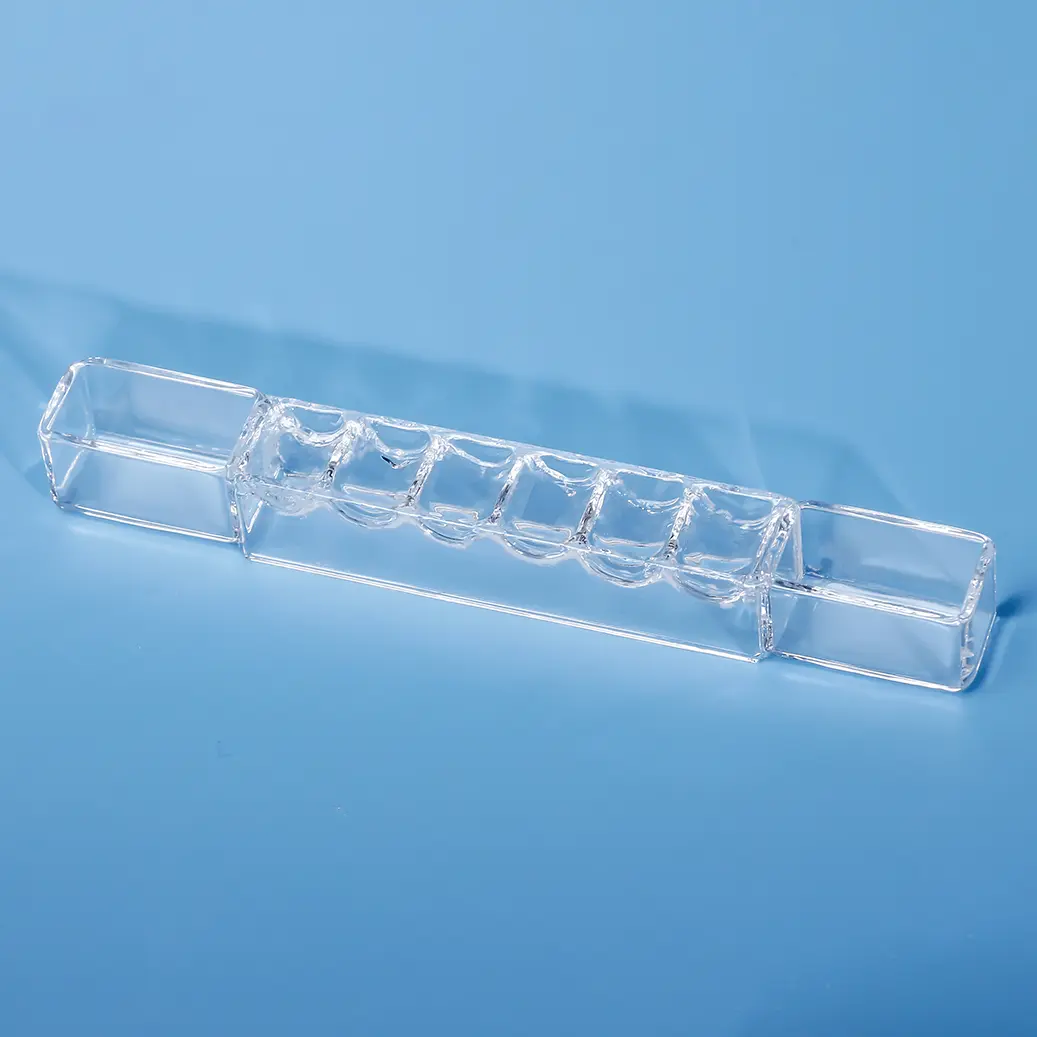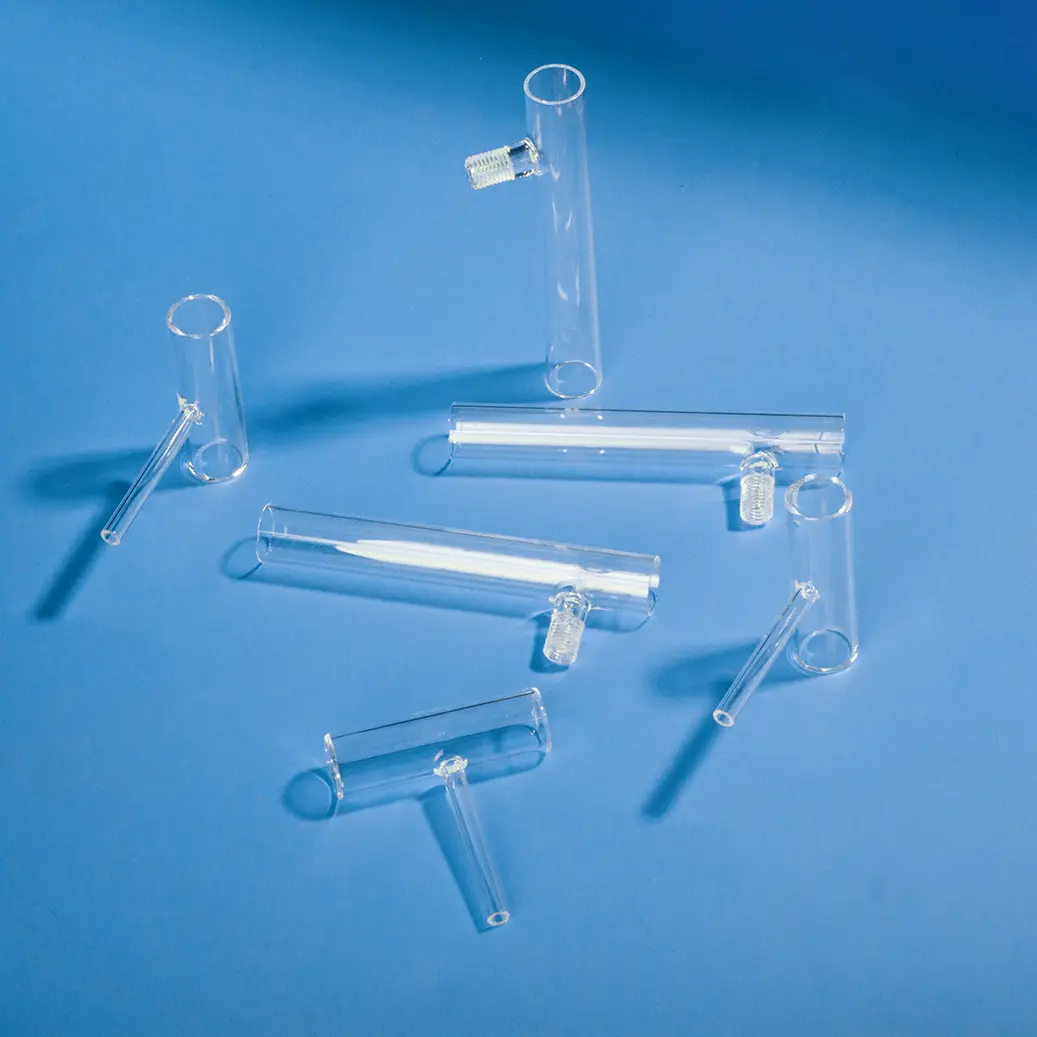Our Quartz XRD Sample Holders are meticulously crafted from high-purity fused silica, offering an amorphous structure that ensures minimal background interference in X-ray diffraction analysis. The transparent design, featuring a central frosted rectangular sample well, is chemically inert and highly resistant to extreme temperatures, making it ideal for various sample types, including powders and thin films. We provide custom solutions to meet specific requirements for different X-ray diffractometers and advanced research applications.
| Property Content | Property Values |
|---|---|
| SiO2 | 99.99% |
| Density | 2.2×10³ kg/cm³ |
| Hardness | 5.5 - 6.5 Mohs' Scale 570 KHN 100 |
| Tensile Strength | 4.8×10⁷ Pa (N/mm2) (7000 psi) |
| Compression Strength | >1.1×10⁹ Pa (160,000 psi) |
| Coefficient of Thermal Expansion | 5.5×10⁻⁷ cm/cm·°C (20°C-320°C) |
| Thermal Conductivity | 1.4 W/m·°C |
| Specific Heat | 670 J/kg·°C |
| Softening Point | 1730°C (3146°F) |
| Annealing Point | 1210°C (2210°F) |
| Strain Point | 1120°C (2048°F) |
| Work Temperature | 1200°C (2192°F) |
| Electrical Resistivity | 7×10⁷ ohm cm (350°C) |
| Size | Customized |
| Logo | Customized Logo Accept |
High-Temperature Resistance
Quartz XRD sample holders are made of quartz glass, which has a softening point of approximately 1730°C. They can be used for extended periods at 1100°C and for short durations at temperatures up to 1450°C.
Chemical Stability
Quartz glass is highly resistant to chemical reactions with most acids. Its acid resistance is approximately 30 times higher than ceramics and 150 times higher than stainless steel. It exhibits exceptional chemical stability, particularly at high temperatures.
Low Thermal Expansion Coefficient
Quartz glass has an extremely low coefficient of thermal expansion, allowing it to withstand rapid temperature changes without fracturing. This provides excellent thermal stability.
Good Optical Transmission
Quartz glass exhibits excellent optical transmission across the entire spectrum from ultraviolet to infrared. Its visible light transmission is greater than 93%, and in the ultraviolet spectral region, its transmission can exceed 90%.
Application Scenario
Crystal Structure Analysis in Materials Science
Quartz XRD sample holders are crucial in various fields of materials science, especially for crystal structure analysis. By analyzing the diffraction patterns produced from the interaction of X-rays with a material, vital information about the material’s crystal structure, grain size, phase composition, and stress state can be obtained.
Phase Composition and Multi-Phase Material Analysis
Quartz XRD sample holders are used to identify components and their relative proportions within polycrystalline materials such as alloys, ceramics, and composites. They are also important for investigating the local structural characteristics of amorphous materials, such as glass and amorphous alloys.
Phase Transition and Thermal Stability Studies
Quartz XRD sample holders enable the study of phase transition behavior in materials under varying temperature or pressure conditions. By heating or cooling samples and monitoring their diffraction patterns, researchers can determine whether phase transitions occur under specific conditions.
Critical Material Applications in Semiconductor Manufacturing
In the semiconductor industry, quartz XRD sample holders play an important role because of their high-temperature and corrosion-resistant properties. They are used in high-temperature devices, such as furnace tubes and glass boats for diffusion and oxidation processes, and in low-temperature devices, such as quartz rings for etching processes.
When using quartz XRD sample holders for experiments, the following points should be observed:
Ensure the sample holder is clean and free of dust to avoid contaminating the sample and affecting diffraction results.
The sample should be evenly distributed in the sample holder to obtain optimal diffraction signals.
Avoid exposing the sample holder to drastic temperature changes to prevent the quartz glass from cracking due to excessive temperature differentials.
When using the sample holder at high temperatures or under specific conditions, follow the manufacturer’s guidelines and safety regulations.
The following steps can be used to clean and maintain quartz XRD sample holders:
Gently remove dust and residue from the surface of the sample holder using a soft cloth or brush.
For stubborn stains, use a mild detergent and water for cleaning, but ensure thorough rinsing and drying to avoid any chemical residue.
Regularly check the sample holder for cracks or damage, particularly after high-temperature or high-pressure experiments.
Store in a dry, clean place, away from direct sunlight and humid environments.
The lifespan of a quartz XRD sample holder depends on various factors, including:
Usage frequency and experimental conditions; frequent use or use under extreme conditions may shorten its lifespan.
Maintenance and cleanliness of the sample holder; good maintenance can prolong its lifespan.
Material and manufacturing quality of the sample holder; high-quality quartz glass is typically more durable.
Frequently asked questions
We specialize in the end-to-end manufacturing of high-purity quartz glass components. Our core product lines include:
Quartz Tubing & Rods: A wide range of diameters and specifications.
Quartz Plates & Discs: Precision-cut and polished for optical and industrial use.
Quartz Labware: A full suite of standard and custom glassware, including beakers, flasks, and boats.
Semiconductor-Grade Quartz: High-purity components like process tubes and carriers for semiconductor fabrication.
Custom Fabricated Components: We can produce complex parts tailored to your unique designs and specifications.
Yes. Custom fabrication is at the core of our business. With over a decade of specialized experience, we partner with companies to provide expert OEM/ODM services. Our capabilities include welding, grinding, drilling, polishing, bending, and other precision processing techniques to create components that meet your exact requirements.
Quality is paramount in our manufacturing process. We are an ISO 9001:2015 certified manufacturer, ensuring that our processes meet international quality management standards.Our products also undergo rigorous SGS testing for purity and performance. We use high-purity raw materials (up to 99.998% SiO2) to produce fused quartz and fused silica products with exceptional thermal stability, high-temperature resistance, and chemical inertness.
We've streamlined our process to be as efficient as possible:
Submit Your RFQ: Send us your technical drawings, specifications, and requirements via our website contact form or email.
Rapid Response: You can expect an initial response within minutes and detailed communication within half an hour.
Design & Proposal: We will deliver a detailed design proposal and a competitive quote within 24 hours.
Prototyping & Production: Upon approval, we move swiftly from prototyping to full-scale production to meet your deadlines.
Partnering with Aoxin Quartz offers several key advantages:
Proven Expertise: With 10+ years in the industry, we have the technical knowledge to tackle complex challenges.
One-Stop Solution: We manage the entire production process, from sourcing high-purity raw materials to fabricating and finishing complex components.
Competitive Value: Located in a major quartz production hub, we leverage an efficient supply chain and advanced manufacturing to offer exceptional quality at a competitive price point.
Dedicated Partnership: Over 90% of our clients become long-term partners. We are committed to your success through responsive service, reliable quality, and innovative solutions.

